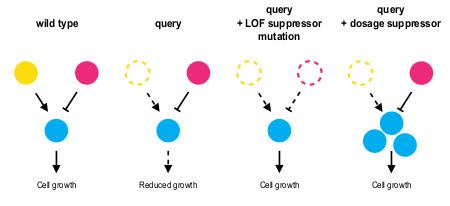Mechanisms of suppression: The wiring of genetic resilience

van Leeuwen J, Pons C, Boone C, Andrews BJ, Recent analysis of genome sequences has identified individuals that are healthy despite carrying severe disease-associated mutations. A possible explanation is that these individuals carry a second genomic perturbation that can compensate for the detrimental effects of the disease allele, a phenomenon referred to as suppression. In model organisms, suppression interactions are generally divided into two classes: genomic suppressors which are secondary mutations in the genome that bypass a mutant phenotype, and dosage suppression interactions in which overexpression of a suppressor gene rescues a mutant phenotype. Here, we describe the general properties of genomic and dosage suppression, with an emphasis on the budding yeast. We propose that suppression interactions between genetic variants are likely relevant for determining the penetrance of human traits. Consequently, an understanding of suppression mechanisms may guide the discovery of protective variants in healthy individuals that carry disease alleles, which could direct the rational design of new therapeutics.
BioEssays,
2017, 39(7)
Pubmed: 28582599
Direct link: 10.1002/bies.201700042
